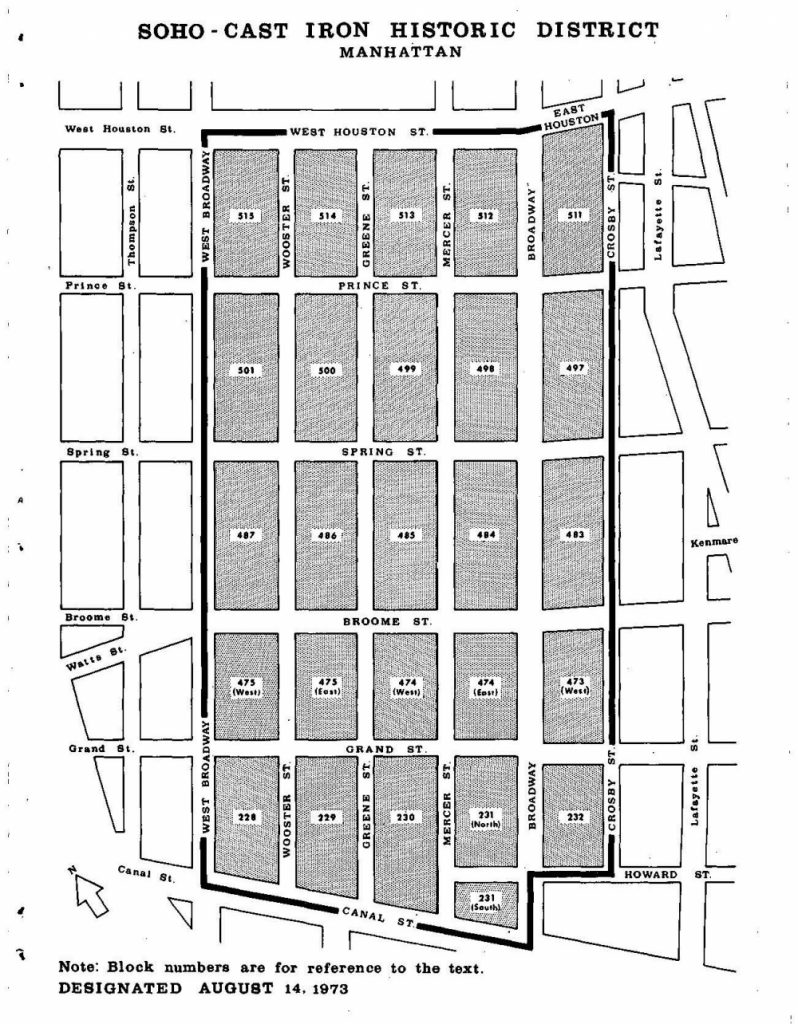This month, we look back on the SoHo-Cast Iron Historic District and how it became designated as such by the Landmarks Preservation Commission. Following efforts such as the Rapkin Report, the halting of the LOMEX expressway, continued re-use and rehabilitation of buildings by artists, and years of preservation activism by locals such as Margot Gayle, the first public hearings in New York City for this proposition were held in June and July of 1970. At the July 21, 1970 public hearing, what would today be considered a modest turnout of thirteen persons spoke in favor of the Historic District and five individuals opposed it, “clearly indicat[ing] that there is great support for this proposed Historic District.”
The process to officially recognize the neighborhood took three years, and in 1973 the SoHo’s cast iron buildings finally became designated as New York City’s twenty-third Historic District. The original District consists of 26 city blocks and contains approximately 500 buildings.
The commission recognized that SoHo had the largest collection of cast iron buildings in the world and that they deserved to be protected and preserved. The main goal was making sure that none of these beautiful buildings were destroyed and replaced with the types of modern towers that were rising elsewhere in Manhattan.
Commission Chairman Harmon H. Goldstone spoke on behalf of the preservation of the Historic District. “The purpose of the designation,” Mr. Goldstone said, “is, to retain the quality of the district. Certainly, one of these qualities is an almost uniform building height. And, while you cannot make any hypothetical future judgments, consistency with the predominant height would be a very important consideration in any new structural proposal for the district. This does not mean that no changes can ever be made. It simply means that the changes that are made must be appropriate to the design of the cast‐iron buildings and to the surroundings”.
“The district demonstrates one way in which the core of an old city can be given new life without the destruction of its cultural heritage,” the Commission noted.
Today, we are all thankful for the efforts of the Landmarks Preservation Commission and all who advocated for the establishment of the Historic District which protects our beautiful neighborhood and its architectural character even as the neighborhood continues to evolve.
